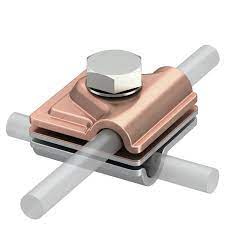
Cable Lugs: Versatile Solutions for Robust Electrical Connections
Electrical energy is one of the most employed kinds of energy, plus it powers up our homes, organizations, and industries. Therefore, an effective electrical product is critical for everyone’s efficiency. One of the essential components of electrical methods will be the connector, which links cable connections, wires, or another electrical conductors. The productivity from the connector is directly proportional to its conduction properties. This is when the bimetallic connector is necessary. Within this blog post, we will go over the bimetallic connector, its benefits, negatives, applications, and the way it enhances electrical conduction with double alloys.
A bimetallic connector the type of electrical connector that combines two various metals or alloys which may have different energy growth coefficients. The most common blend is copper and light weight aluminum. With this combination, the copper is definitely the major conductor, along with the lightweight aluminum kinds a mechanized relationship. The connector functions by utilizing the variation from the metals’ thermal expansion coefficients to traction or compress a conductor between them. The light weight aluminum increases a lot more than copper when heated as a result, it tightens the grip in the copper conductor, enhancing the connector’s mechanized and electrical attributes.
The Bimetallic connector has several benefits. Initial, it provides a very low-price solution while still providing higher energy stableness and good electrical conductivity. Second, it is easy to install and transferable, which makes it perfect for software that need regular disconnects and reconnects. 3rd, it reduces the potential risk of rust and improves the longevity of the electrical process. Lastly, the connector can be custom made to certain specifications, rendering it a flexible component in electrical solutions.
In spite of its positive aspects, the bimetallic connector has numerous disadvantages. One of the most substantial downsides is it will not be ideal for higher-present programs due to the relatively low electrical conductivity of aluminum. In addition, the connector is vulnerable to tiredness problems and could require standard routine maintenance to ensure its durability.
The applications of the bimetallic connector are prevalent. It really is used in the strength sector to connect higher-voltage power transformers, within the auto market to connect basic engines, and in the building business as expense collection connections. Moreover, it is actually used in train and aerospace businesses, solar power installation, and electrical transmitting and submission systems.
The bimetallic connector has a substantial influence on electrical techniques since it boosts the electrical conduction with two precious metals. By combining two different metals with contrasting thermal expansion coefficients, it assures an effective electrical relationship by eliminating the space and enhancing the technical solidity. The connector’s conductive and mechanized attributes are essential in ensuring the system’s dependability, basic safety, and gratification.
Simply speaking:
In Simply speaking, the bimetallic connector plays an important role in electrical systems by providing a reliable, very low-expense, and reputable electrical connection. Its distinctive mixture of two various alloys with different types of energy development coefficients gives exceptional mechanical and conductive properties, making it well suited for different software. Its principal rewards are that it reduces the chance of deterioration, enhances trustworthiness, and offers versatility. Nevertheless, it is far from ideal for substantial-present programs and requires routine maintenance for prolonged use. Even so, it remains to be a common and popular electrical connector in different businesses, and with engineering improvements, its properties and software keep improving.



